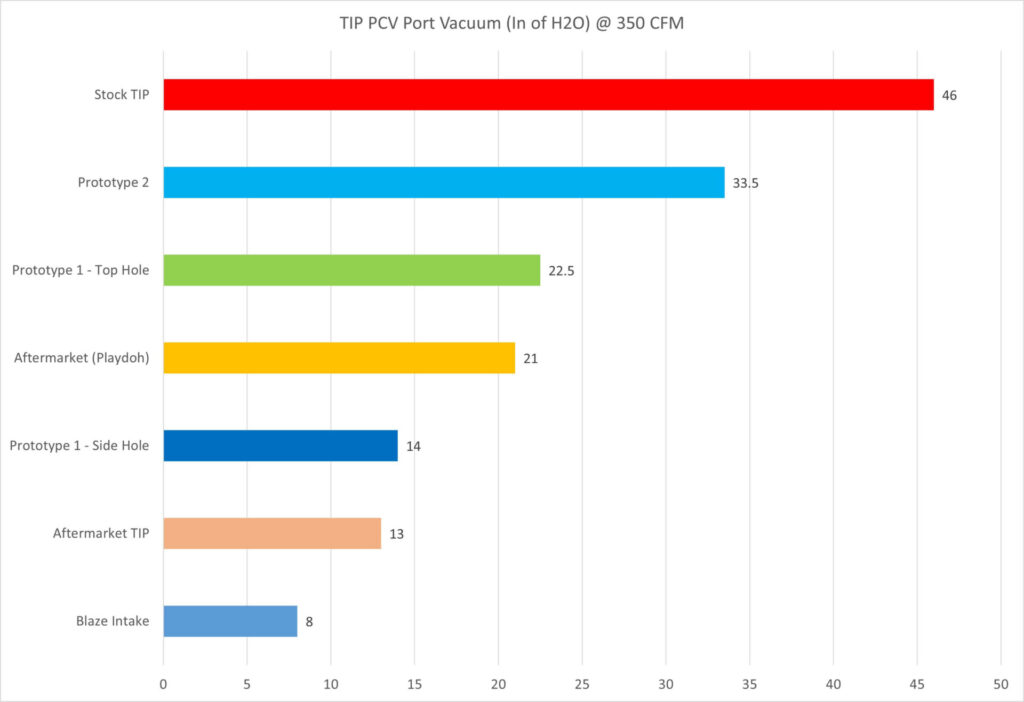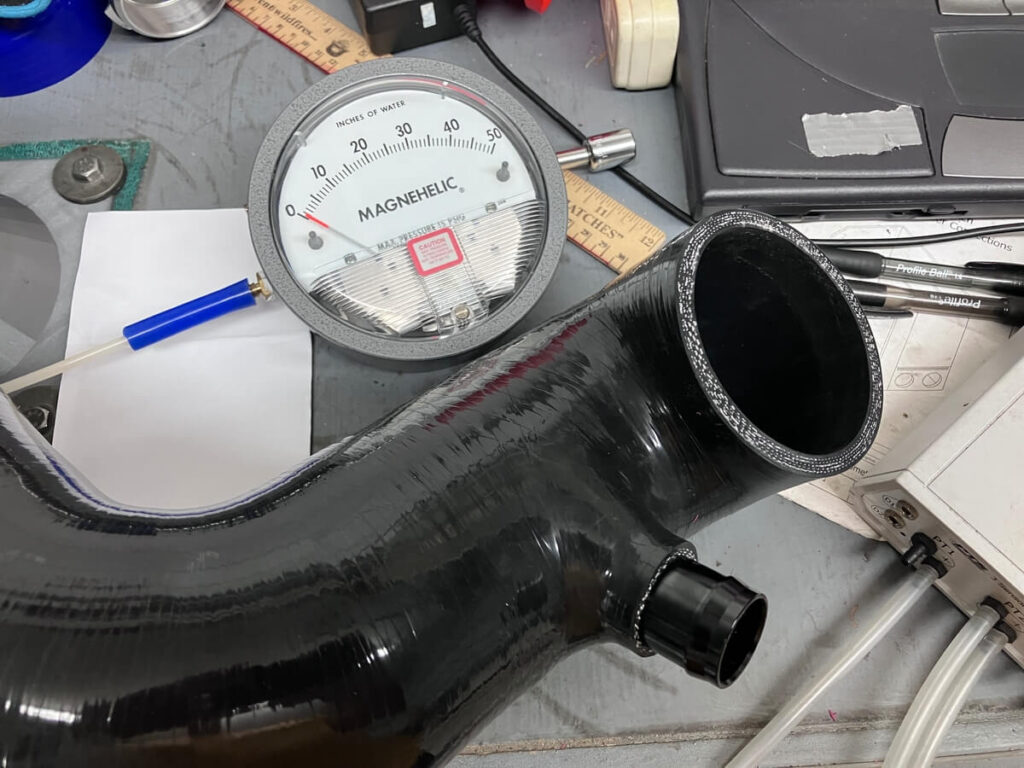Background:
Measuring the vacuum effect of the inlet elbow was a project started by Tony at DataDrivenMQB and prompted some controlled tests to compare the vacuum generated at the PCV port from different inlet elbows.
With the Blaze ATOM Race V2 intake now available this test is being done using it.

Test Process:
The intake is assembled and attached directly to the flow bench. Since this test is to measure the vacuum generated at the PCV port the flow bench is operated at a steady flow rate.
A flow rate of 350 CFM has been selected for making the measurements.
Once the flow rate has reached 350 CFM the pressure is read at the PCV port using a magnehelic differential pressure gauge.
Test Results:
The Blaze ATOM Race V2 PCV port has a vacuum of 8″ of H2O @ 350 CFM.
This value is shown on the chart below along with other inlet elbows that have been tested.

The Blaze ATOM Race V2 generates the least vacuum of any of the inlet elbows that have been tested thus far.
This result is not unexpected on account of the location of the Blaze PCV port being between the two final bends on the inlet hose before connecting to the turbocharger.

The vacuum that is present at the PCV port is in part a result of the pressure drop that occurs along the path of the intake. The further along the intake that air travels the more pressure drop results, increasing the vacuum.
With the placement of the port being before the final bend in the inlet hose the Blaze does not take advantage of the unavoidable pressure loss that occurs at the last bend in the hose.
If the Blaze PCV port were located after the final bend the vacuum would be higher, although the physical design of the intake likely makes this infeasible.
Conclusions:
The Blaze ATOM Race V2 intake was subject to a test measuring the vacuum generated at the PCV port.
The Blaze intake generated a vacuum of 8″ of H2O @ 350 CFM.
This is the lowest amount of vacuum that has been recorded and is approximately 17% of the amount of vacuum generated by the stock Mk7 GTI turbo inlet elbow, 46″ of H2O @ 350 CFM.
Next Steps:
Once the Blaze intake is fully installed measurement of the crankcase pressure will be made, similar to what was discussed in this post.


What’s the significance of the vacuum being low at that point?
It has some effect on the crankcase pressure. I also ran through a few variations on the car, discussed in this post.
The subject is addressed in much more depth at DataDrivenMQB.